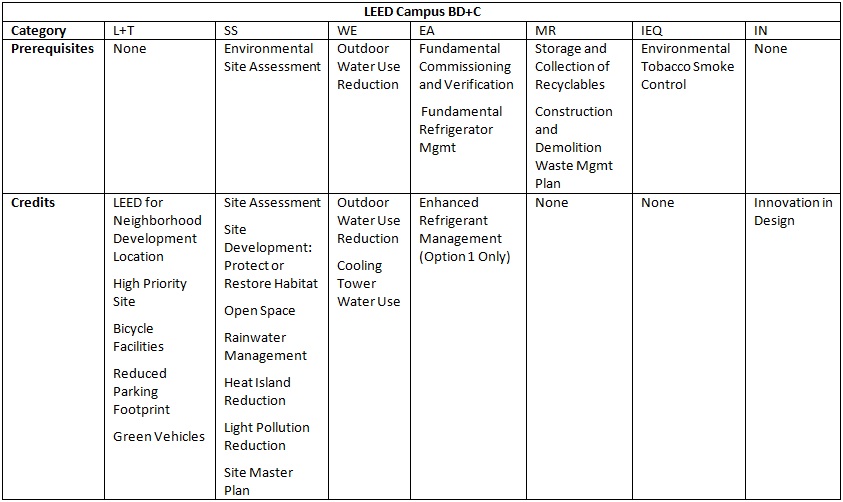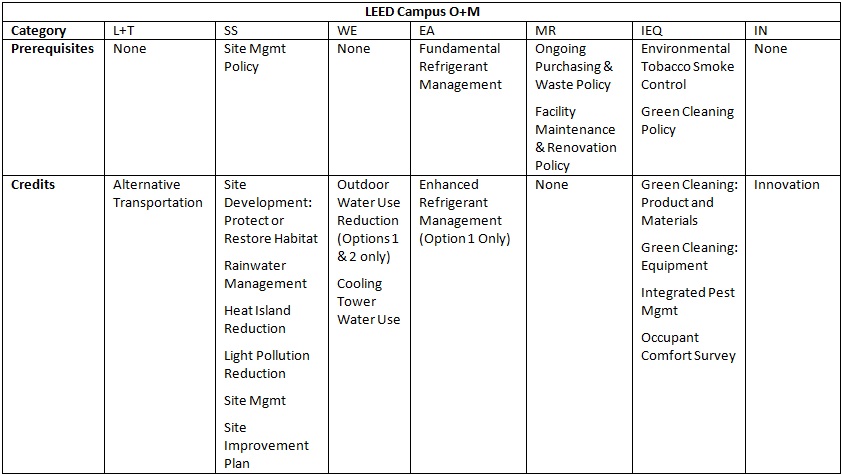by Michael Arny: President of Leonardo Academy — November 2015 — For campus buildings, whether corporate, university or government owned, one uniform management practice is often more effective than juggling multiple management practices. LEED Campus provides a framework for organizing and updating campus site management practices. Contrary to what the name may imply, LEED Campus is not a separate LEED rating system, nor is it a group certification. Rather, there are two versions, LEED Campus for Existing Buildings and LEED Campus for New Construction, that both provide the opportunity to gain campus-wide preapproval for a number of LEED site management credits and jumpstart the LEED certification process for future projects.
LEED Campus for Existing Buildings allows preapproval of 6 prerequisites, 15 credits, and more than 15 points. LEED Campus for New Construction allows preapproval of 7 prerequisites, 15 credits, and more than 15 points. These preapproved prerequisites and credits can be applied to all future LEED projects on the campus, providing a major head start for building certification. In fact, preapproved credits for both rating systems can provide more than one-half of the points needed for certification!
The tables below list the prerequisites and credits that can be used as a framework for setting up campus-wide management practices for LEED Campus for Building Design and Construction (synonymous with New Construction) and LEED Campus for Operations and Maintenance (synonymous with Existing Buildings).

Table 1:LEED Campus New Construction. The credits and prerequisites are organized by credit category, including Location and Transportation (L+T), Sustainable Sites (SS), Water Efficiency (WE), Materials and Resources (MR), Indoor Environmental Quality (IEQ), and Innovation (IN).

Table 2:LEED Campus Existing Buildings. The credits and prerequisites are organized by credit category, including Location and Transportation (L+T), Sustainable Sites (SS), Water Efficiency (WE), Materials and Resources (MR), Indoor Environmental Quality (IEQ), and Innovation (IN).
The process of pursuing LEED Campus is relatively simple. The general steps are as follows: Register the campus, register the master site and specify the rating system, prepare the applications for campus credits, submit the application for preliminary review, answer questions, conduct final review and preapproval of credits and prerequisites, then use campus prerequisites and credits in individual projects.
In addition to jumpstarting LEED certification, LEED Campus yields many benefits. For one, all buildings on the grounds share one approach to site management, simplifying the site management process by streamlining and unifying campus-wide policies and plans. It encourages broader involvement from campus occupants, so that students and staff on university campuses and employees and management staff on business campuses engage more intentionally with their surroundings, fostering camaraderie and enthusiasm for the space they all occupy.